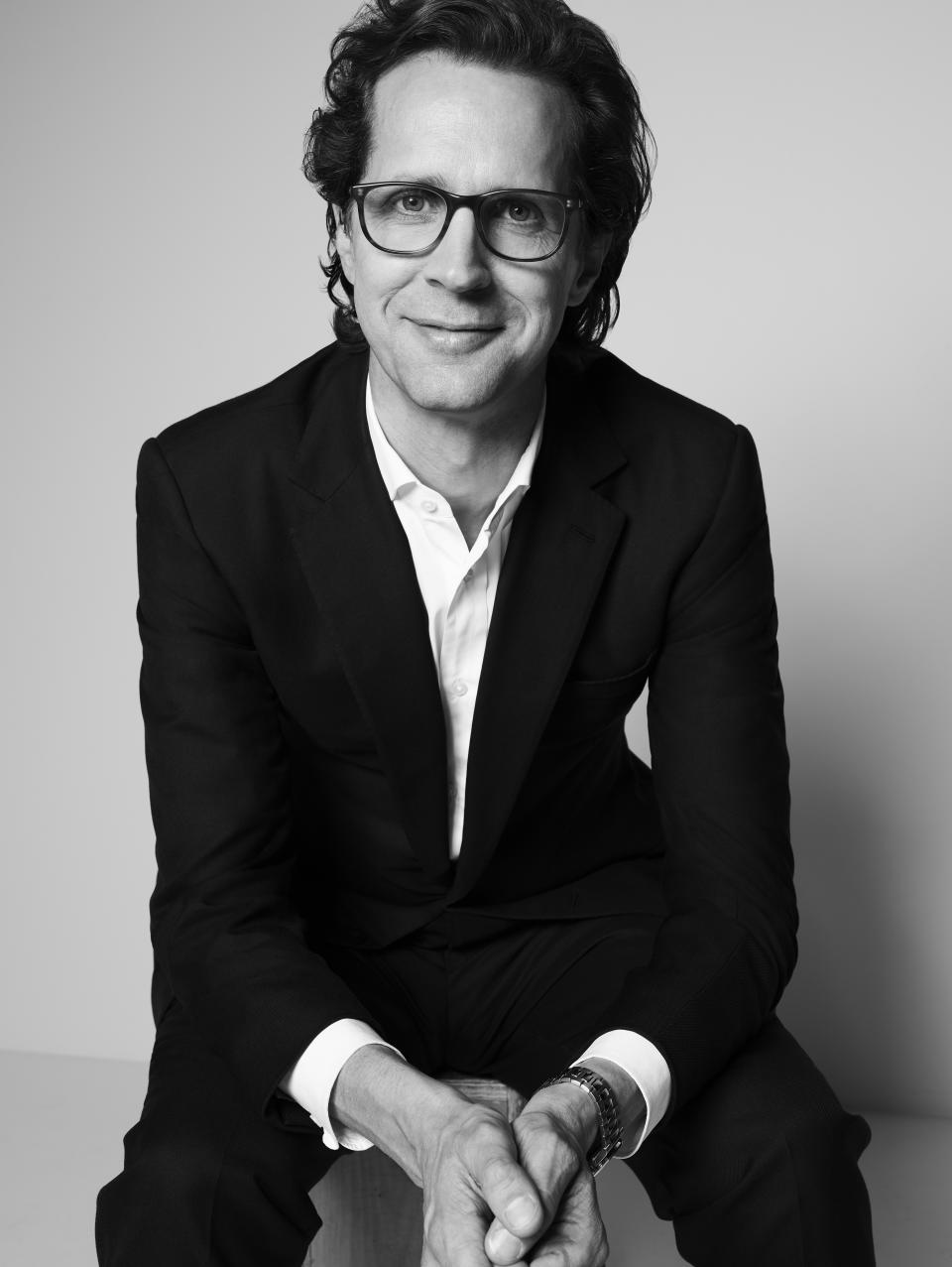PVH Presses On Through Tough Macro Environment, Tops Profit Estimates
- Oops!Something went wrong.Please try again later.
- Oops!Something went wrong.Please try again later.

Stefan Larsson claims he’s getting his groove on at PVH Corp. Now he just has to keep the momentum going through a tricky consumer landscape.
Larsson, who leads the Tommy Hilfiger and Calvin Klein parent as chief executive officer, on Wednesday turned in first-quarter earnings that topped analyst estimates and told WWD that it all came down to the power of his PVH+ strategic plan.
More from WWD
“We are winning across both Tommy and Calvin in product, in consumer engagement and in the marketplace execution,” Larsson said.
The CEO’s PVH+ plan has the company focusing in on must-have “hero” products, backing them up with splashy marketing campaigns — from Blackpink’s Jennie Kim for Calvin Klein to Shawn Mendes for Tommy Hilfiger — and moving toward a supply chain that is more reactive to consumer changes and requires less inventory.
Along the way, PVH is increasing investments in both marketing and supply chain.
It’s a work in progress, but so far the formula seems to be working, pushing PVH through an economic environment that’s proven vexing for many companies, from Target Corp. to Michael Kors parent Capri Holdings.
PVH’s first-quarter net income inched up to $136 million, or $2.14 a diluted share, from $133.1 million, or $1.94, a year earlier.
Earnings per share came in 24 cents ahead of the $1.90 the company projected, which analysts had penciled in, according to FactSet.
That has the company topping profit estimates for eight straight quarters — and while beating expectations is not the end-all, be-all outside of Wall Street, it does give PVH and Larsson some more room to run.
Still, Wall Street has a way of keeping the pressure on, and shares of PVH fell 3.6 percent to $82.95 in after-hours trading as investors pored over the results.
Revenues for the quarter ended April 30 rose 2 percent to $2.2 billion from $2.1 billion. In constant currencies, the top line grew 5 percent with a 44 percent boost in China, where the market reopened once strict COVID-19 restrictions were dropped.
PVH also reaffirmed its outlook for the year, calling for revenue growth of 2 percent to 3 percent in constant currencies with an operating margin of about 10 percent and EPS of roughly $10.
“We continue to see our consumers hold in terms of Europe and North America — it’s holding at the level we saw in Q1,” Larsson said. “In Asia, we see a strong reopening effect in China. Over time, we’ll see that normalize.”
Tommy Hilfiger revenues increased 8 percent in constant currencies to $1.1 billion, with a 7 percent boost in the international division and an 11 percent gain in North America.
Calvin Klein’s revenues inched up 3 percent in constant currencies to $887.7 million, with an 11 percent rise in international and 12 percent drop in North America, where declines at wholesale offset direct-to-consumer growth.
The company’s home market has proven to be a tough spot for brands across the spectrum, but Larsson said he is focused on building the right base for the brands, for instance with the move last year to gradually take control over its U.S. wholesale business from G-III Apparel Group.
“We are very pleased with North America’s performance because we started to make great progress in building the foundation for sustainable, profitable, brand-accretive growth,” Larsson said. “You see it in DTC. The reason Tommy looks like it’s outperforming is Tommy is more DTC, Calvin is more wholesale. Wholesale partners in the channel are more cautious.”
Larsson came to PVH — via Ralph Lauren Corp. and Old Navy — from a long and formative stint at fast-fashion giant Hennes & Mauritz. And he’s surrounded himself with people who speak that language, including Inditex veteran Eva Serrano, who heads up the Calvin Klein brand, and former H&M executive David Savman, who is executive vice president and chief supply chain officer.

The idea is not to turn PVH into a fast fashion player, but to apply lessons from the quick-turn crowd to PVH.
“It’s a mindset of getting closer to the consumer and being able to make decisions much closer to demand, thereby cutting out a lot of redundancy,” Larsson said. “The traditional groups of fashion brands run with far too much inventory. So over time, we’re going to get much better at matching inventory to demand, but this is a multiyear journey.”
Larsson’s plan is to link all that together, key must-have items that are staples in wardrobes, supported by large and targeted marketing and then, eventually, more efficient production and delivery.
“I believe 90 percent or more of our opportunity is still to be tapped into,” Larsson said.
Easy enough to say, but it’s a reinvention on high-wire given the topsy-turvy economy and the ever-changing fashion industry.
Best of WWD

